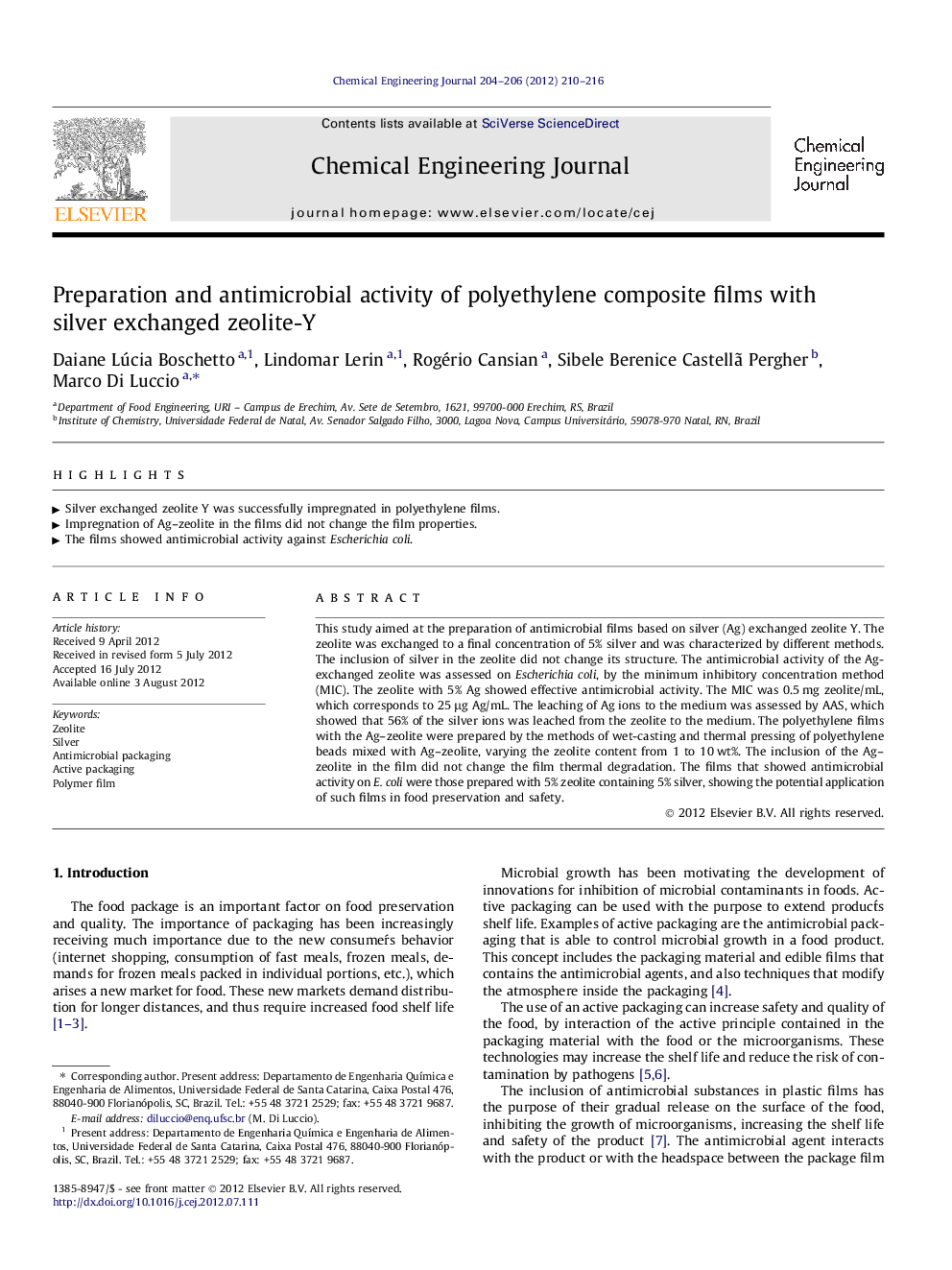| Article ID | Journal | Published Year | Pages | File Type |
|---|---|---|---|---|
| 149524 | Chemical Engineering Journal | 2012 | 7 Pages |
This study aimed at the preparation of antimicrobial films based on silver (Ag) exchanged zeolite Y. The zeolite was exchanged to a final concentration of 5% silver and was characterized by different methods. The inclusion of silver in the zeolite did not change its structure. The antimicrobial activity of the Ag-exchanged zeolite was assessed on Escherichia coli, by the minimum inhibitory concentration method (MIC). The zeolite with 5% Ag showed effective antimicrobial activity. The MIC was 0.5 mg zeolite/mL, which corresponds to 25 μg Ag/mL. The leaching of Ag ions to the medium was assessed by AAS, which showed that 56% of the silver ions was leached from the zeolite to the medium. The polyethylene films with the Ag–zeolite were prepared by the methods of wet-casting and thermal pressing of polyethylene beads mixed with Ag–zeolite, varying the zeolite content from 1 to 10 wt%. The inclusion of the Ag–zeolite in the film did not change the film thermal degradation. The films that showed antimicrobial activity on E. coli were those prepared with 5% zeolite containing 5% silver, showing the potential application of such films in food preservation and safety.
► Silver exchanged zeolite Y was successfully impregnated in polyethylene films. ► Impregnation of Ag–zeolite in the films did not change the film properties. ► The films showed antimicrobial activity against Escherichia coli.
